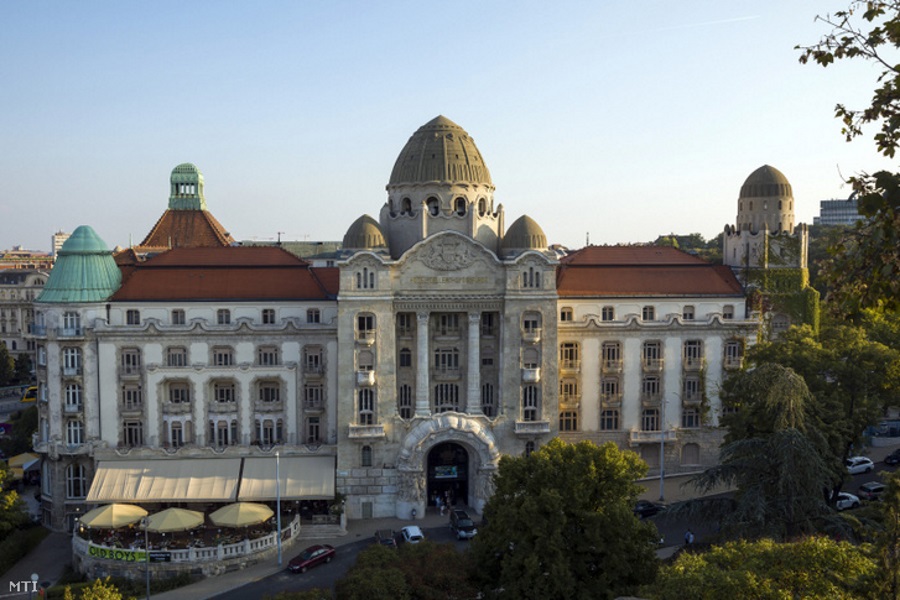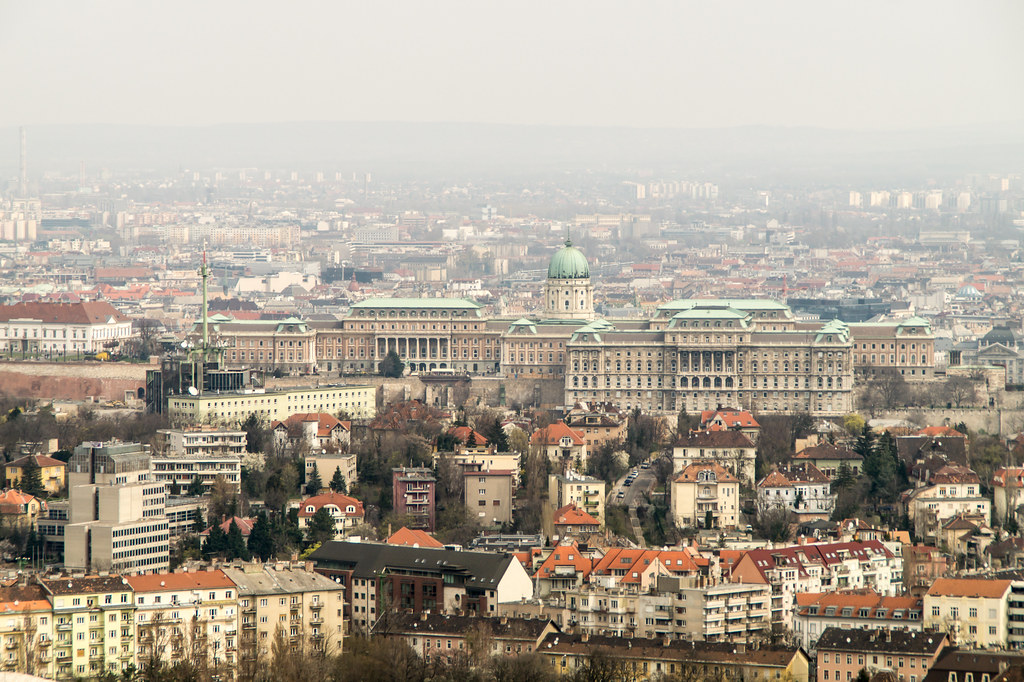Top 7 Scenic Tram Rides in Budapest
- 30 Jun 2023 9:22 AM

Here are seven great tram journeys for you to explore – jumping off whenever you wish. Look out, too, for seasonal and heritage specials, such as the Christmas tram, when vehicles get dolled up in their festive best.
For routes and schedules, see here
1. Tram 1
One of the many wondrous things about tram 1, apart from the fact that it has recently been completely renovated, many of its stops relandscaped and embellished, is the fact that it crosses the Danube not once but twice.
Though this involves Budapest’s two most prosaic bridges – Rákóczi híd to the south and Árpád híd to the north – this does allow you sweeping views of the elegant millennial arts complex and Margaret Island from its lesser-seen northern perspective.
In between, you can take in Bikás park in south Buda, the sprawling park of Népliget in south Pest and the many elegant villas of Zugló as you follow the grander sections of the outer ring road, Hungária körút. As you skirt the City Park, you might see the forlorn remnants of Budapest’s revered Amusement Park, even perhaps the upper peaks of certain enclosures of Budapest Zoo.

Budapest Zoo
True, in its near hour-long trek through Hungary’s capital, tram 1 passes a fair few communal apartment blocks, but choose the prettiest section and you shouldn’t be disappointed.
This may also entail the handful of stops through Óbuda, partly alongside sleepy cobbled streets little changed since novelist (and local resident) Gyula Krúdy described them a century ago.
2. Tram 2
The grande dame of all trams, the number 2 elegantly cradles the Danube on the Pest side, providing front row seats to gawp at Buda’s historic cityscape, not to mention all the main bridges gracing the city centre.
Setting off from Margaret Bridge by Jászai Mari tér, you glide around the Parliament building, past the Gresham Palace, take in Chain Bridge and then the Pest embankment of five-star hotels. This was the korzó of yore, the backdrop for Budapest’s own variety of passeggiata, the evening stroll taken by locals in Mediterranean countries to see and be seen.

Margaret Bridge
You then head under Elizabeth Bridge towards Liberty Bridge by the Great Market Hall, tram 2 now sadly swallowed up by an underpass linking with Fővám tér M4 metro station. Passing the Bálna complex, a large whale-shaped structure of steel and glass, you approach the millennial arts complex before terminating at Közvágóhíd, 20 minutes after you started.
Taking tram 2 in the opposite direction is possibly more dramatic, as the journey starts off in humdrum south Pest before switching to cinemascope when – ta-da! – the tram emerges from the Fővám tér underpass to show Europe’s most gorgeous capital in its full Danubian glory.
3. Tram 19

Gellért Hotel
The Buda equivalent of the number 2 tram in Pest, the 19 also serves Bartók Béla út, meaning you can observe the terrace life of Buda’s most happening avenue – cafés such as Hadik, Kelet and Béla – before the Gellért Hotel hones into view.
This is where tram 19 turns a corner and picks up the pace beneath Gellért Hill, then Castle Hill, clocking off those same central bridges only on the Buda side, bringing the Pest embankment into sight.
It also passes key spas along the way – the Gellért, Rudas and Lukács – as it winds its way up to Óbuda, with its village-y vibe and low-rise buildings. Towards the northern terminus, tram 19 stops at Szent Margit Kórház, from where you can scale a leafy incline to reach the unsung yet worthwhile Kiscelli Museum.
Note that tram 41 follows the same route as the 19 after both stop at Móricz Zsigmond körtér.
4. Tram 56
It takes almost an hour for tram 56 to run its length yet not once does it even consider crossing the Danube, staying on the Buda side all the way. This takes you from the lovely little local market in Budafok, once one of the most intensive wine-growing areas of Hungary, way up to the leafy slopes of Hűvösvölgy.
Leaving the wine cellars and champagne producers of Budafok, you rumble through residential Buda for a while, before passing the market and mall of Újbuda-központ, the foot of Castle Hill with its palatial sights above and the busy twin transport hubs of Déli station and Széll Kálmán tér.

Castle District
Everything goes green again at the pretty park of Városmajor and tranquil scenery of upper Buda until the 56 pulls up to the hikers’ favourite of Hűvösvölgy, where you can connect with the Children’s Railway.
Note that the 56 is quite capricious in its timetable, running only during working hours on weekdays, but sticks to a frequent schedule once it gets going.
5. Tram 59
Running parallel to tram 56 (see above) between Szent János Kórház and Déli station, the 59 then goes off piste, skittishly deciding to tackle the junior slopes of Buda’s picturesque District XII.
You pass the dramatic statue of Apor Vilmos tér, named after a heroic priest who protected Jews, women and children during the war before gliding past some of the most desirable properties in Budapest, until reaching one of the city’s prettiest landmarks: Farkasréti cemetery.

Farkasréti Church
The last resting place of such notable as composer Béla Bartók, film director Zoltán Fabri and singer Tamás Cseh, this sprawling expanse of ornate gravestones provides panoramic views of the city beyond – and tram 59 with its last stop but two.
6. Tram 60
Tram 60 is no tram at all, but the cogwheel railway, whose use is permitted with a standard transport ticket or pass. Done out in fire red and set back from the regular tram line at the pretty park of Városmajor, the cogwheel railway was instigated by a specialist firm from Switzerland from 1874, the whole line opening in 1890.

Cogwheel railway
One of Budapest’s most popular excursion options, the cogwheel railway chugs up Sváb Hill to Széchenyi Hill, crossing some of the loveliest stretches of Buda landscape. It takes just under a quarter-hour to reach its final destination of Széchenyi-hegy, where it connects with the Children’s Railway, allowing you to enjoy another of Budapest’s transports of delight.
7. Tram 61
Though by no means Budapest’s longest tram journey, the 61 is among the most picturesque, skirting the southern slopes of Gellért Hill in south Buda. This was once awash with vineyards, before the phylloxera blight of the 1870s, and the gentle journey along Viilányi út still feels bucolic.
Setting off from Móricz Zsigmond körtér, you soon pass the lovely park around Feneketlen-tó, ‘the Bottomless Lake’, with its statues and waterfront restaurants. At Szüret utca, you can stop off to visit the Buda Arboretum, alongside the University of Gardening.

Bottomless Lake
The next stop is named after the famous institution it serves, the Pető Intézet, pioneers in conductive education, housed in one the many grand buildings lining this quiet street.
Turning the corner at BAH csomópont, the tram takes in more greenery either side of the main artery of steep Alkotás utca, before trundling past the leisure and retail complex of MOM Park. It comes to rest at Széll Kálmán tér, Buda’s main transport hub.
Words by Peterjon Cresswell for Xpatloop.com
Peterjon has been researching the byways of Budapest for 30 years, extending his expertise across Europe to produce guidebooks for Time Out and his own website liberoguide.com






















LATEST NEWS IN current affairs